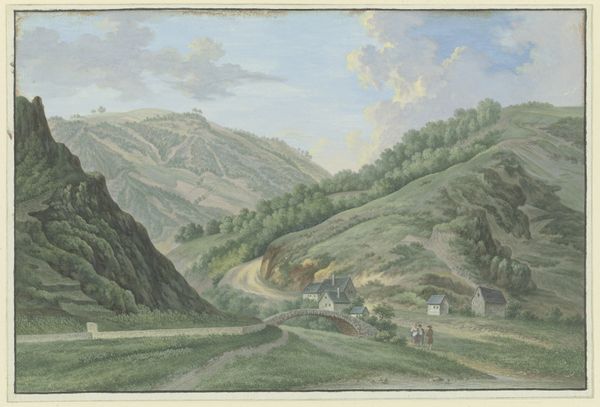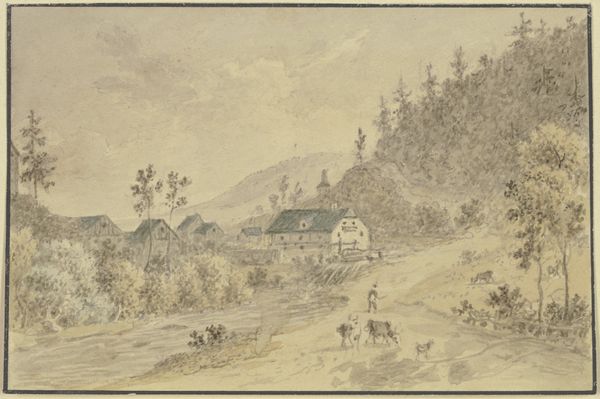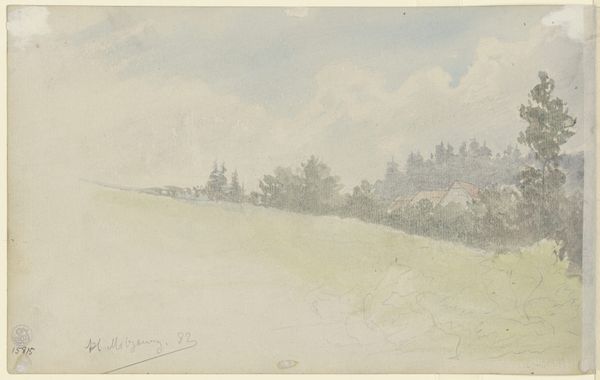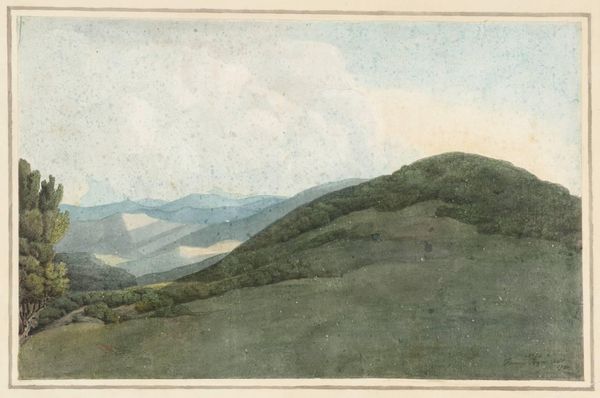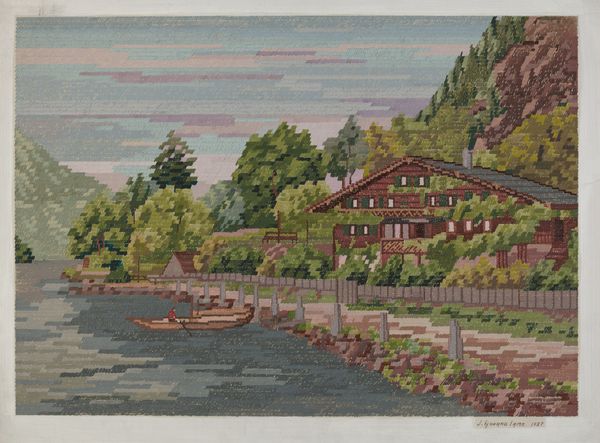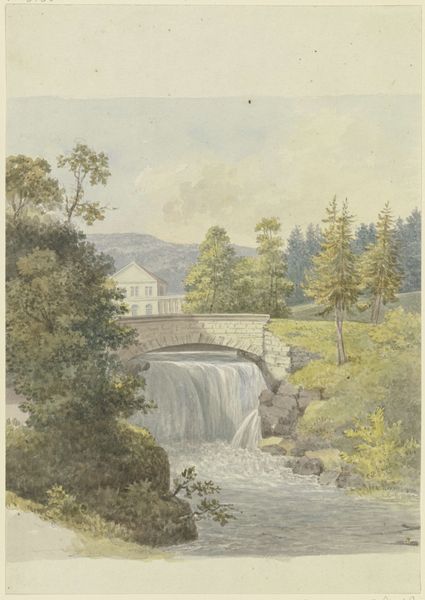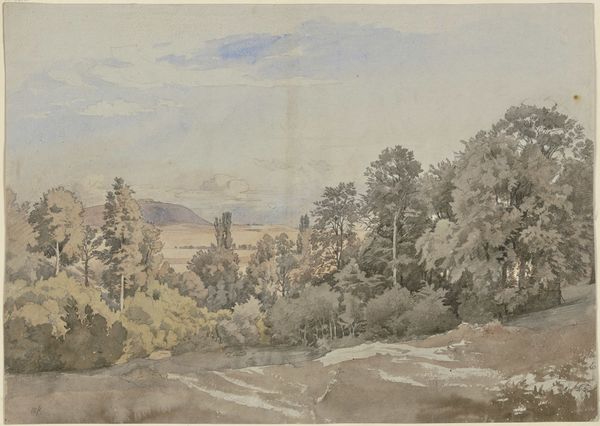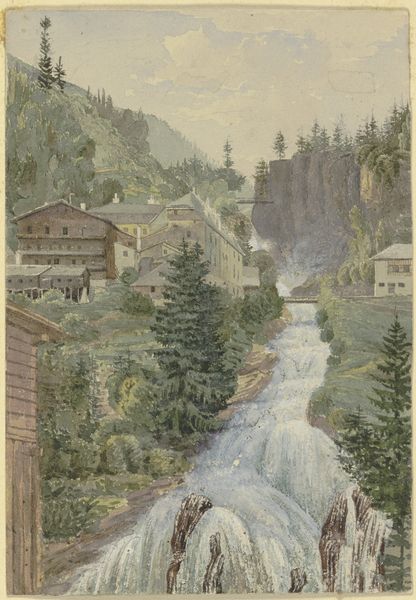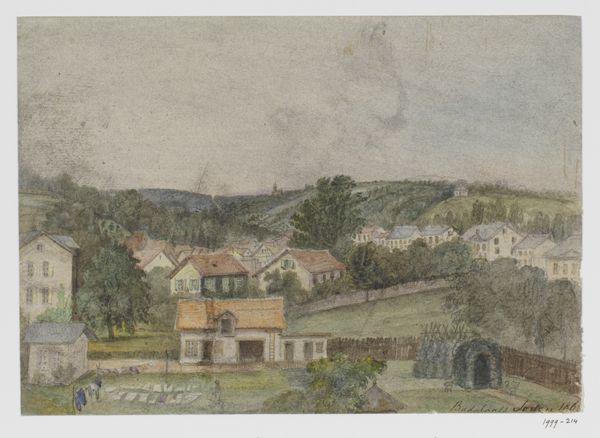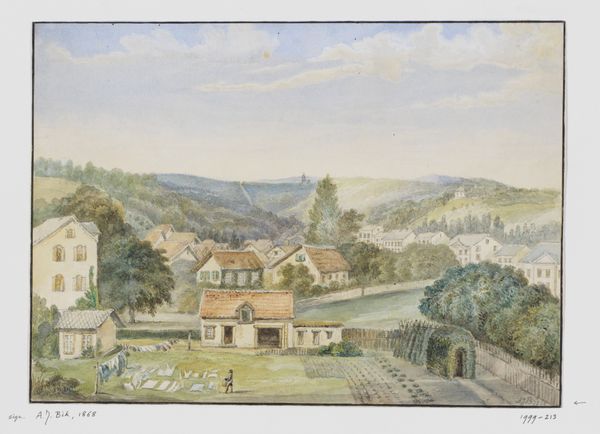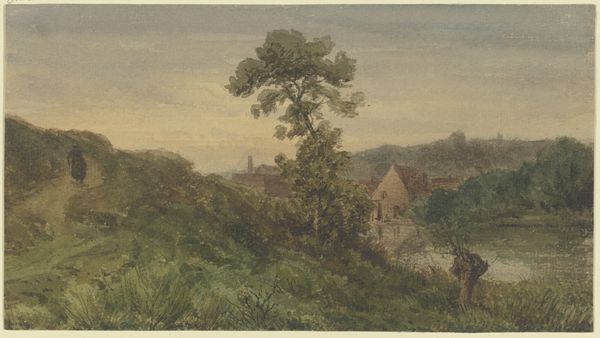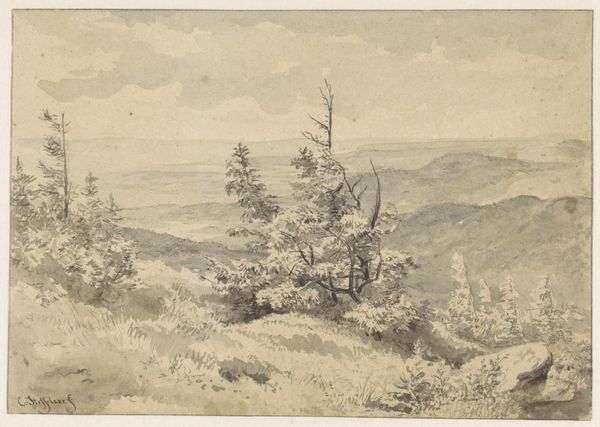
drawing, paper, watercolor
#
drawing
#
16_19th-century
#
landscape
#
paper
#
watercolor
#
romanticism
#
watercolor
Copyright: Public Domain
Curator: Looking at this work, entitled "Section of the Odenwald", created by Karl Peter Burnitz, it’s remarkable how the watercolor medium captures the landscape's textures so softly. What’s your initial take? Editor: Immediately, I feel a sense of quiet melancholy. The muted greens and greys evoke a stillness, a hushed quality. The single house nestled in the valley hints at isolation, doesn't it? A sort of bucolic retreat. Curator: I see the construction and composition itself mirroring that stillness. Burnitz is meticulously layering washes of color; he must have been deeply engaged with the properties of watercolor on paper, creating the atmospheric perspective so characteristic of Romantic landscapes. The availability of specific pigments and prepared watercolor cakes would have undoubtedly impacted the painting’s execution as well. Editor: And thinking about that Romantic impulse, aren't we also witnessing a construction of an idea of the German landscape? The solitary dwelling, the winding path, the suggestion of a grand, untouched nature. It resonates with broader socio-political movements toward national identity. How did average laborers perceive of such portrayals of landscapes, and did it serve to pacify their daily working experience, through offering access to bucolic life in picture form? Curator: Good question! Burnitz isn’t simply rendering what he sees; the selection and preparation of the paper are also critical to this scene. The watercolor washes work together. Look at the way the artist employs line and shading: everything must have been considered, from watermarks on the paper source, down to pigment density to create this desired effect of atmospheric recession. Editor: Precisely! The very act of aestheticizing this specific locale in the Odenwald is deeply intertwined with 19th-century Romanticism's project of crafting idealized national landscapes, perhaps masking socio-economic tensions within Germany at the time. It makes me wonder about the class dimensions inherent to who was granted the privilege to partake in that pastoral idyll and who wasn’t. Curator: The material evidence of Burnitz’s artistic labor remains visible in the layers and the handling of watercolor. It creates a lasting impression. Editor: And a continuing prompt, even now, to interrogate whose narratives, identities, and labor such apparently serene landscapes effectively erased.
Comments
No comments
Be the first to comment and join the conversation on the ultimate creative platform.

